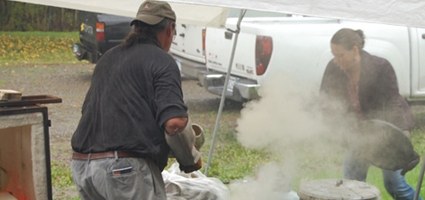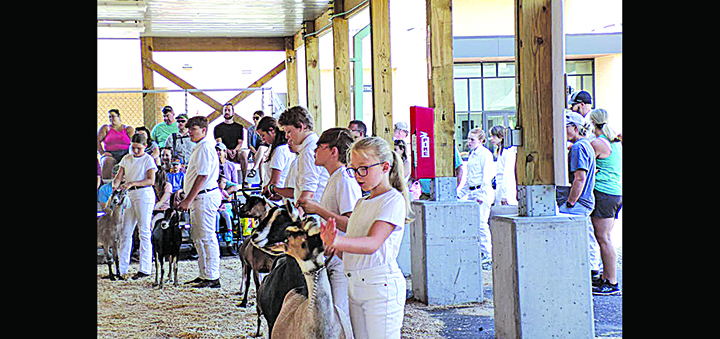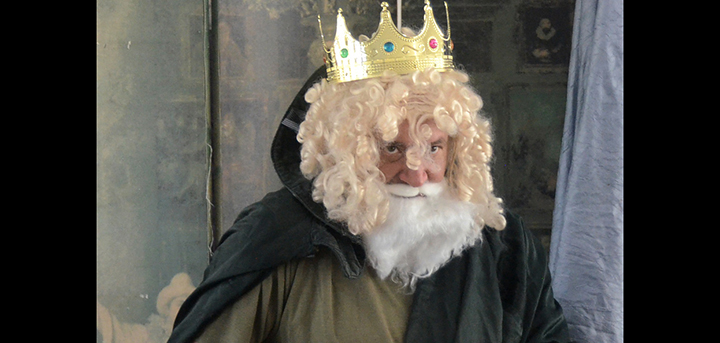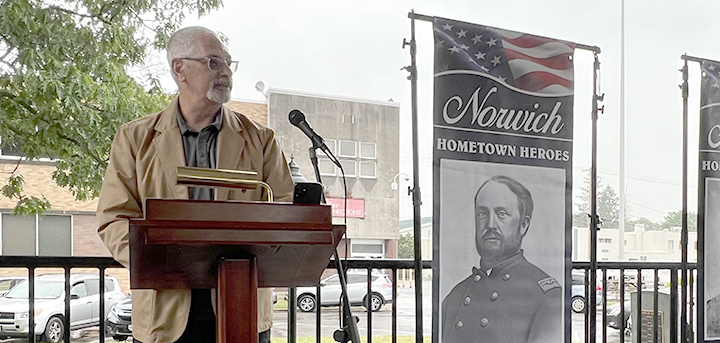Punching the Clock: Fire it up
I learned three very important things in my mini-apprenticeship to master potter Bill Troxell of Strong Stone Pottery and Gallery 3-2-1. No, make that four.
First and foremost, I learned that pottery is just as much a science as it is an art. Secondly, atmospheric conditions are highly influential in the ceramic process. Third, to be a successful potter, you need to like playing with fire as well as clay. And lastly, newspapers (especially those of competitors) are fairly toxic when burned.
When Bill and his wife Diane invited me to spend a Sunday afternoon with them at their studio and gallery outside of Oxford, I was thrilled. Here, I thought, was a chance to redeem myself for the hideous clay creations I produced in all those grade school art classes.
Unfortunately, the weather didn’t really cooperate. So instead of glazing and firing my own piece, I assisted Bill. Which, I’ll be honest, was probably a good thing.
Since we would be firing outdoors, Bill had erected a canopy to protect both his portable raku kiln and us from the rain. He built the compact, propane-fueled kiln last year for demonstration purposes and hopes to use it with schools in the future.












Comments